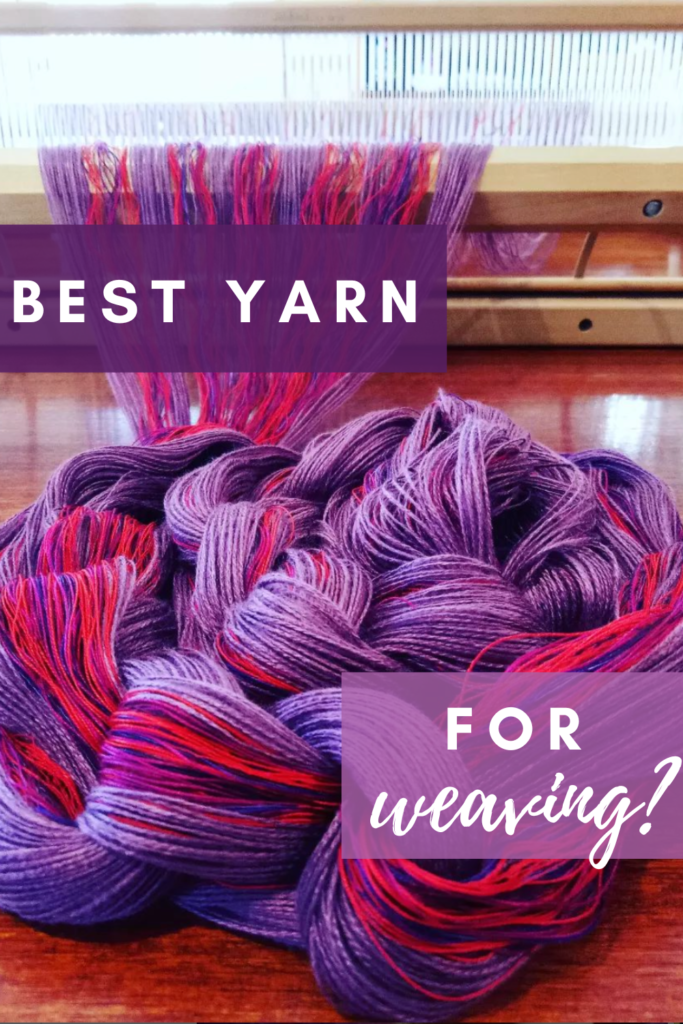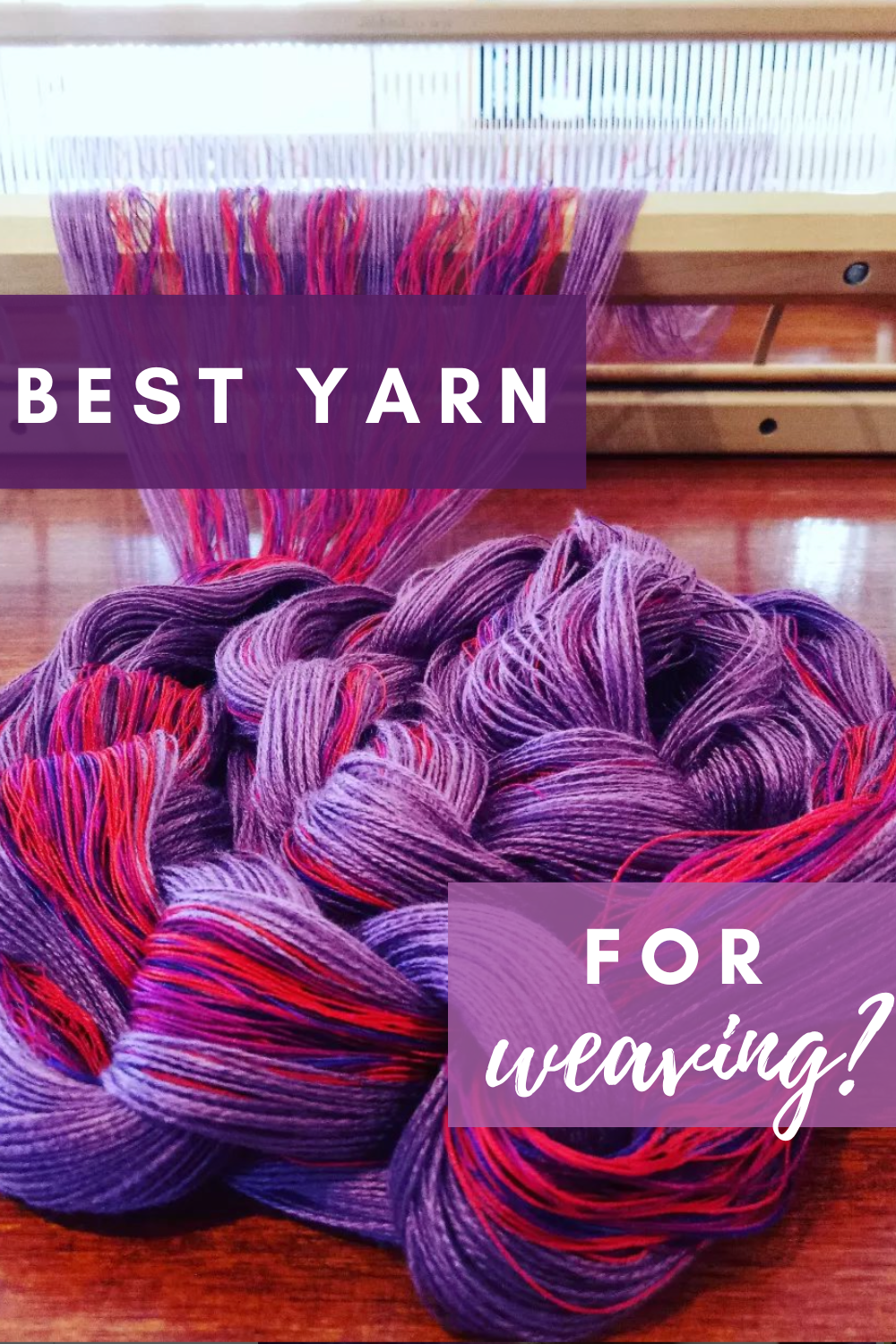There is no one simple answer to the question about what the best yarn for weaving is. There are many variables and the answer will depend on many considerations.
There is currently a huge array of yarns commercially available that are suitable for weaving and they are not necessarily sold as “weaving” yarns.
The absolute sure way to know how a yarn is going to behave in your project is to weave a sample first. If you just want to test a yarn or combination of yarns before investing with them in a full sized project, a small sample is perfect.
But if you’re not a fan of sampling (you might change your mind on this – I did!) or you are hurried for time, here are some questions to ask yourself when choosing yarn for your next weaving project:
- What do you intend to weave?
- Will you be using the yarn for warp or weft?
- What will it be used for?
- Who is it for?
- How frequently does it need to be laundered?
- What yarns are accessible to you?
- What is your budget for the project?
- Will it be for a wearable item?
- Are you planning to combine different fibres in the one piece?
And then the answer can also come down to a personal preference. Lots of weavers love unmercerised cotton for weaving towels, but I prefer to use it for more decorative items – I don’t particularly like it and never have! 🙊
For functional items like kitchen towels, soft and fluffy cotton is not going to do you any favours, you are much better to use a durable cotton that is absorbent and unlikely to shed.
For a woven item that is going to be worn, like a scarf or shawl, comfort needs to play a big factor in your yarn choice. Does it feel pleasant against the skin? No one, and I mean no one (and especially not me!) wants to wear a scratchy or irritating garment!
Another important factor is the yarn strength. Is it strong enough to use for warp? If an unsuitable yarn is used for warping, you may find that you’re constantly dealing with broken warp threads – that can be frustrating enough to make you give up on a project.
There are some yarns that will not pass the “snap test” (they break when you pull or snap them apart quickly) but are still suitable for warp as long as you are careful of consistent warp tension. An example of this is rayon chenille. It will snap quite readily when pulled apart quickly, but with even tension it is lovely to weave with for both warp and weft. My Maria Scarf uses this yarn.
In opposition to yarn that snaps and breaks too easily, is the yarn that drifts apart. If you haven’t experienced the pain of unwittingly warping with one of these yarns yet, you can get a real life look in this video, so you will know the type of yarn to avoid warping with.
One thing that frequently confuses newer weavers is trying to choose the right sized yarn for the correct heddle size and attempting to understand what the numbers on weaving yarns mean, or the sizing information on knitting or crochet yarns.
I have two resources that will really help you to understand and identify yarns according to numbers:
The Weaver’s Toolkit (ebooklet which includes yarn weights and thicknesses plus recommended heddle sizes)
What do all the numbers mean? (online class)
I also have quite a few free yarn resources that will be helpful to you-
Choosing and using yarns in weaving…
The difference between knitting and weaving yarns…
Which cotton yarn should I use?..
Which yarn is best for scarves?..
3 Yarns beginner weavers should never use…
If you feel stressed at the idea of making mistakes and possibly wasting some yarn, here is my best advice to you:
Don’t use expensive yarn until you feel ready!
Wait until you have a good number of projects under your belt with affordable yarns, then think about using that fancy yarn you’ve been saving. Don’t put unnecessary stress on yourself by running before the baby steps have been completed.
Remember, weaving is for relaxation, fun and to challenge your creativity. At the end of the day, it’s just yarn and if it doesn’t work out as well as you imagined then you have learned how to do better next time.
I hope this post is helpful to you on your weaving journey, I welcome your questions in the comment section below.
Until next time…
Happy Weaving!

